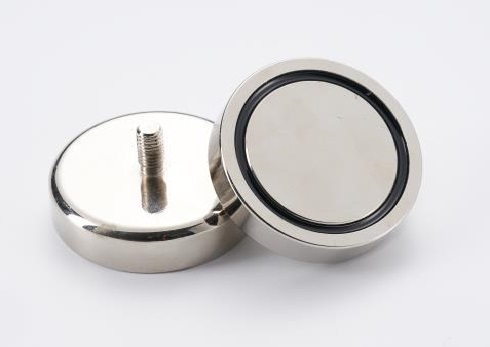What is the relationship between temperature and the magnetic properties of NdFeB products? Is the working temperature the same for different brands? What is the upper limit of the heat-resistant working temperature? Today NingBo BeiLun Meank Magnetics Co.,ltd. will introduce to you the temperature problem of sintered NdFeB.
When it comes to the relationship between temperature and magnetism, we must first understand a concept-"Curie temperature". Does it feel familiar to hear the word Curie? More than 200 years ago, a famous physicist discovered a physical property of magnets in his laboratory. When a magnet is heated to a certain temperature, its original magnetism will disappear. This great physicist is exactly Madame Li's husband, Pierre Curie. Later people called this temperature Curie point (Curie point), also called Curie temperature (Tc) or magnetic transition point.
1. Definition: Curie temperature is the temperature at which a magnetic material changes between ferromagnetic and paramagnetic. When the temperature is lower than the Curie temperature, the material becomes ferromagnetic. At this time, the magnetic field related to the material is difficult to change. When the temperature is higher than the Curie temperature, the substance becomes a paramagnetic body, and the magnetic field of the magnet easily changes with the surrounding magnetic field.
2. Numerical value: The Curie temperature represents the theoretical working temperature limit of magnetic materials. The Curie temperature of NdFeB is 320-380 degrees Celsius. The level of the Curie point is related to the crystal structure formed by the sintering of the magnet.
3. What happens if the Curie temperature is exceeded? If the temperature reaches the Curie temperature, the molecules inside the magnet move violently and demagnetize, which is irreversible.
In fact, the Curie temperature is only the temperature under laboratory conditions, or it can be said to be the ideal temperature, and the working temperature of the magnet is the highest temperature at which the material maintains its magnetism under actual conditions. The maximum working temperature of sintered NdFeB is much lower than its Curie temperature. Within the working temperature, the magnetic force will decrease when the temperature rises, but most of the magnetic force will recover after cooling down.
1. The relationship between working temperature and Curie temperature: The higher the Curie temperature, the higher the working temperature of the magnetic material, and the better the temperature stability. Adding cobalt, terbium, dysprosium and other elements to the sintered neodymium iron boron raw material can increase its Curie temperature.
2. The maximum operating temperature of sintered NdFeB depends on its own magnetic properties and the selection of operating points. For the same sintered NdFeB magnet, the closer the working magnetic circuit is, the higher the maximum use temperature of the magnet and the more stable the performance of the magnet. Therefore, the maximum operating temperature of the magnet is not a certain value, but changes with the degree of closure of the magnetic circuit.




